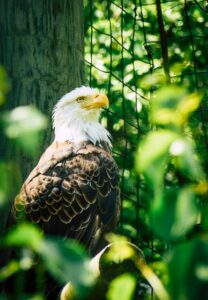Integrated Pest Management (Overview)
Integrated Pest Management (IPM) is a comprehensive approach to pest control that emphasizes sustainable methods to keep pest populations at manageable levels. It incorporates a four-tiered strategy: preventing pest infestations by creating an inhospitable environment for pests, avoiding conditions that attract pests, diligent monitoring to detect early signs of activity, and suppression using the least invasive methods. IPM favors mechanical, cultural, and biological controls over chemical interventions, promoting practices that reduce the risk to the environment and human health. This methodical approach to pest control is not only eco-friendly but also cost-effective in the long term, as it focuses on long-lasting solutions rather than quick fixes.
Prevention
The first line of defense in any IPM program is prevention. For gardens in Denton, this means creating conditions that are unfavorable for pests but beneficial for grass. Start with selecting the right type of grass for the local climate. Warm-season grasses like Bermuda or St. Augustine can tolerate the heat and are less susceptible to common pests. Selection of resistant grass varieties and regular aeration to improve soil health are key to deterring bug infestations. You can find other articles on how to grass species on this site. Regularly aerating the lawn can prevent soil compaction, and proper mowing keeps grass strong and less likely to succumb to pests.
Nutrient management is also crucial; applying the right amount of fertilizer prevents the excessive growth that can attract pests. Proving your yard with the right amount of water and fertilization also can reduce excess thatch which creates other problems as well. Along with nutrient management, regular weed pulling will be a good deterrent to insects and small mammals who will eat your crops .To make the process easier and more efficient, start by watering the area or choosing a time after rainfall when the soil is moist and soft—this helps in extracting the entire root system without breaking it. Equip yourself with a sturdy pair of gloves to protect your hands and use the right tools such as a weed puller tool or a garden fork for deep-rooted varieties like dandelions. Pull weeds gently but firmly, ensuring you get as much of the root as possible, as leaving fragments can lead to regrowth.
Do not make it a goal to get rid of all wildlife that you see in your yard! Most animals will provide benefits to the health of your lawn/garden. The main problem is when one species (often invasive) takes over the land because there is no such ecosystem in place. It’s important to encourage natural predators, such as birds and beneficial insects, which naturally keep pest populations in check. By focusing on creating and sustaining a healthy ecosystem within your yard, you can discourage unwanted pests from entering your lawn in the first place.
Avoidance
Avoidance is defined as strategies to protect plants from pests that are already present in the yard. Whereas prevention is reducing pests that are here, avoidance is your next line of defense in learning to coexist with wildlife that you aren’t trying to get rid of.
Implementing techniques such as crop rotation can disrupt the life cycle of pests and reduce the incidence of soil-borne diseases, thereby maintaining soil health and reducing the dependency on chemical treatments. Utilizing disease-resistant plant varieties is another effective method; these plants are bred to withstand common pathogens and pests, minimizing the need for interventions. Additionally, physical barriers such as bird nets protect plants from birds and other wildlife without harming them, preserving both your garden’s health and local fauna. Together, these practices not only prevent pests and animals from impacting garden and lawn health but also promote a more sustainable and environmentally friendly approach to garden management.
In Denton, where the climate can contribute to pest problems, water management is essential. Overwatering can lead to shallow root systems and thatch buildup, which are great breeding grounds for pests that are already in the garden. Implementing drought-tolerant landscaping can also reduce the risk of pest problems, as native plants are better adapted to the local environment and less likely to attract non-native pests.
Choosing pest-resistant grass varieties and using disease-free seed or sod can significantly reduce the likelihood of pest problems. It’s equally important to clean your gardening equipment before moving between areas to avoid transporting pest larvae or spores.
Monitoring
Accurate identification of pests is essential for effective control. Keeping a log of pest activity can help predict and prepare for future outbreaks. It is also important to monitor the health of your lawn overall, as a healthy lawn is the best deterrent to pest problems.
This is an important aspect of Integrated Pest Management (IPM) that involves regularly observing and documenting the types and levels of pests in your garden or lawn to effectively manage them before they become a severe problem. Experts recommend the use of pheromone traps. These traps emit synthetic pheromones that mimic the chemicals insects use to communicate, effectively attracting specific pest species. This method allows gardeners to identify the presence of pests early and monitor their population dynamics over time. In addition to pheromone traps, sticky traps colored yellow or blue can attract and capture flying insects like aphids or whiteflies, providing insight into which pests are currently active.
Regular scouting, another key monitoring technique, involves visually inspecting plants at different times of the day and week to spot signs of infestation such as chewed leaves, eggs, or the pests themselves. This hands-on approach, combined with trap data, provides a comprehensive view of pest activity, enabling timely and targeted interventions that can prevent widespread damage to your garden or lawn.
Monitoring is a continuous process. It involves regularly inspecting your lawn for signs of pest activity. This includes looking for discolored grass, bare patches, and the presence of insects or grubs.
Supression
When prevention, avoidance, and monitoring indicate a pest problem that could damage the lawn, suppression techniques come into play. Suppression doesn’t always mean reaching for pesticides; often, there are other methods that can be effective. Physical methods, such as hand-picking larger insects or using barriers, can work for certain pests. Biological controls, including beneficial insects like ladybugs or parasitic nematodes, can suppress pests without chemicals.
There are many ways to keep pests out of your garden, like pulling weeds by hand. You can also use things called pheromone lures to trap pests like thrips or cucumber beetles. Another way is using chemicals like insecticides or fungicides, but this should be your last choice. These sprays can kill good bugs along with the bad ones, so it’s important to pick ones that don’t hurt the environment too much. These methods might sound complicated, but you don’t have to figure it out alone. You can ask for help at (940) 202-9123 for any pest problem. It’s good to take action early to keep your garden safe and think about gardening in a way that helps the planet.
When chemical controls are necessary, the focus is on using the least harmful products and applying them in a targeted manner to minimize their impact on the environment and non-target organisms. Spot treatments are preferred over blanket applications, and timing the application to the life cycle of the pest can maximize effectiveness and efficiency.

Conclusion
Implementing an IPM approach to lawn care in Denton, TX, means taking proactive steps to maintain a healthy lawn that is less inviting to pests. Through prevention, avoidance, monitoring, and careful suppression, homeowners can enjoy a vibrant lawn while minimizing the need for chemicals and protecting the local environment.

